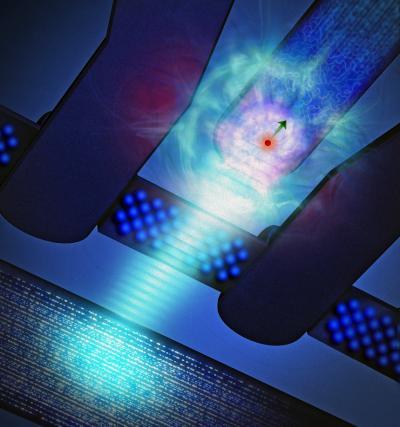Cracking the quantum safe
October 15, 2012

This is an artist’s impression of a phosphorus atom (red sphere surrounded by electron cloud, with arrow showing the spin direction) coupled to a silicon single-electron transistor. A burst of microwaves (blue) is used to ‘write’ information on the electron spin. (Credit: Tony Melov)
The Nobel Prize in Physics went to achievements in quantum information, Adam Frank, a professor of physics and astronomy at the University of Rochester, writes in The New York Times.
It may not catch as many headlines as the hunt for elusive particles, but the field of quantum information may soon answer questions even more fundamental — and upsetting — than the ones that drove the search for the Higgs. It could well usher in a radical new era of technology, one that makes today’s fastest computers look like hand-cranked adding machines.
Increasingly clever experiments are exploiting advances in cheap, high-precision lasers and atomic-scale transistors. Quantum information studies often require nothing more than some equipment on a table and a few graduate students. In this way, quantum information’s progress has come not by bludgeoning nature into submission but by subtly tricking it to step into the light.